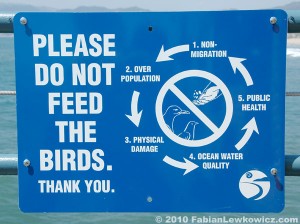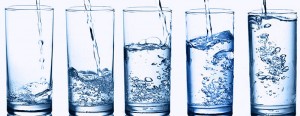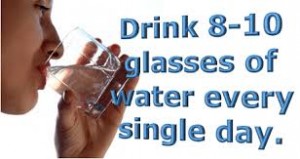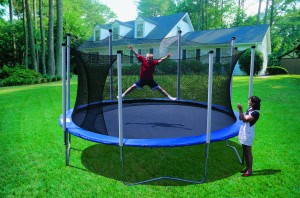Prom was right around the corner and it had been awhile since I had gotten my hair cut, like almost two months, it was long, and I had enough of it. So I drove over to the barber, walked right in with no wait and sat down, told her that I just wanted it all cleaned up and about an inch off the top, none of that crazy stuff. We were just same talking, she was asking me where I was going to school in the fall and how my senior year had been going. Usually I’m in an out in like fifteen minutes, but of course this took longer. I’m sitting there just looking at myself in the mirror when she makes this comment, “my gosh, you have a lot of grey hair for your age.” So I’m sitting there and I’m like, well I’m not old so that can obviously be ruled out. I know that grey hair can be due to stress and sometimes genetics, but my mom is in her 40’s and she’s still blonde, and my is in his early 50’s and has some shades of grey. I wasn’t too concerned about it, it wasn’t visible so I’m like whatever, chance happens. I thought this would be a great opportunity to do some deeper research about why young kids have grey hair.
An article that was written by Daphne Sashin on WebMD discussed science behind premature grey hair. She included the research done by Dr. Jeffrey Benabio, a dermatologist from San Diego. Dr. Benabio stated that hair turns grey when the color-producing cell stops producing the shade of color in your hair, the pigment. An observational study included in this article found that on average, white people start going grey around the mid-30’s, Asian people will show signs in their late 30’s, and Africn-Americans will have grey hair show up in their mid-40’s. Premature grey hair will show up in white people around the age of 20 and at the age of 30 for African Americans. In a statement from Dr. Benabio, he says that going grey does not correlate with having medical problems, except in a few rare cases. Benabio also says that stress is not a factor in having grey hair, although that is a popular belief. Having grey hair can be correlated with a lack of the B-12 vitamin or if you have problems with your thyroid or pituitary glands. Doctors such as Deborah J. Morton looked deeper into this study by observing the bone density of 1,200 men in California. Her conclusion to this study found that bone density is not related to your hair, but rather your ethnicity, height, weight, and activity level. Going grey later in life is very prevalent and is definitely correlated with genetics, although chance is a very high possibility. In Dr. Benabio observational study he found that stress is not a cause of grey hair, so although grey hair may cause some people to become stressful, stress does not cause grey hair, which rules out reverse causation.
An article on The Huffington Post written by an associate editor, Kyli Singh, listed elven facts about grey hair, What You Need To Know About Going Grey In Your 20s. The three points that stood out to me in this article that were not discussed by Dr. Benabio and Dr. Morton were that: premature grey hair is linked to your genetics, gender plays a role in going grey, and smoking can increase your odds of having grey hair. Dr. Michael Eidelman, a professor of dermatology at Icahn School of Medicine at Mount Sinai discussed the genetics behind having grey hair. He stated that when we are born our bodies are preprogrammed, so if your parents or grandparents were lucky enough to go grey in their early adult lives, then you probably will too.  He then expands on the subject by saying genetics also play a role in how intense your grey hair will be along with the progress and color shade of the hair, grey, white or silver. Much like Dr. Benabio, Eidelman reiterates the age in which what ethnicity begin to show signs of grey hair, and continues to go on to tell us how half the population will have half their head covered in grey hair near the age of 50. Eidelman wraps up his statement by discussing how gender plays a role in having grey hair, men will start to show signs of grey in their late 20’s, while women in their mid to late 30’s. A study done by the National Center for Biotechnology back in 2010 discovered that people who engage in smoking are two in and half times more likely to go grey than non-smokers before turning 30. Smoking can not only lead you to going grey early in life, but also can lead to going bald according to the New York Times, smoking breaks down hair cells and can damage the scalp.
He then expands on the subject by saying genetics also play a role in how intense your grey hair will be along with the progress and color shade of the hair, grey, white or silver. Much like Dr. Benabio, Eidelman reiterates the age in which what ethnicity begin to show signs of grey hair, and continues to go on to tell us how half the population will have half their head covered in grey hair near the age of 50. Eidelman wraps up his statement by discussing how gender plays a role in having grey hair, men will start to show signs of grey in their late 20’s, while women in their mid to late 30’s. A study done by the National Center for Biotechnology back in 2010 discovered that people who engage in smoking are two in and half times more likely to go grey than non-smokers before turning 30. Smoking can not only lead you to going grey early in life, but also can lead to going bald according to the New York Times, smoking breaks down hair cells and can damage the scalp.
Many factors go into premature grey hair such as smoking, but overall you have to believe that the majority of people that have premature grey hair is due to the fact of genetics alone, the variables on top of that just increase the progress and intensity of how much and how visible those hairs will in your early life. The question that was not answered was, is chance still a possibly of going grey prematurely or is it ruled out?
Sources
Sashin, Daphne. “Premature Graying: Reasons, Options.” WebMD. N.p., n.d. Web. 20 Oct. 2016.
Singh, Kyli. “What You Need To Know About Going Gray In Your 20s.” The Huffington Post. N.p., 26 Oct. 2015. Web. 20 Oct. 2016.


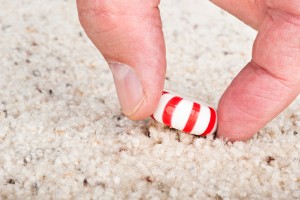



 It turns out that the body does react to hunger in ways that could relate to and cause anger in people. As described
It turns out that the body does react to hunger in ways that could relate to and cause anger in people. As described  Another reason for hanger is related to the common stress response known among psychologists as the flight-or-fight response. In the brain’s attempts to raise glucose levels, the body releases a lot of hormones, one being adrenaline. This release of adrenaline can make you act as if you are in the presence of stress and are reacting in a way of fight-or-flight. By choosing to take the fight route, you may be taking the actions of yelling at someone or showing a short temper to defend yourself.
Another reason for hanger is related to the common stress response known among psychologists as the flight-or-fight response. In the brain’s attempts to raise glucose levels, the body releases a lot of hormones, one being adrenaline. This release of adrenaline can make you act as if you are in the presence of stress and are reacting in a way of fight-or-flight. By choosing to take the fight route, you may be taking the actions of yelling at someone or showing a short temper to defend yourself. Make sure to be smart when trying to combat hanger though. Some foods are better than others! Nutritional foods are always the better option because they provide more nutrients for your brain and your body. Although Snickers candy bars commercials may suggest otherwise, candy and junk food will not help your body in the long run, so fuel up on a healthy, nutritional snack and strike back against hanger!
Make sure to be smart when trying to combat hanger though. Some foods are better than others! Nutritional foods are always the better option because they provide more nutrients for your brain and your body. Although Snickers candy bars commercials may suggest otherwise, candy and junk food will not help your body in the long run, so fuel up on a healthy, nutritional snack and strike back against hanger!
 Overall, I find the “breaking the seal” dilemma to be an interesting and relatable topic to many. It seems like a very reasonable thing to run a personal experiment on, but it’s an unrealistic idea to test scientifically. I can imagine the scientists having a hard time raising funds for this idea!
Overall, I find the “breaking the seal” dilemma to be an interesting and relatable topic to many. It seems like a very reasonable thing to run a personal experiment on, but it’s an unrealistic idea to test scientifically. I can imagine the scientists having a hard time raising funds for this idea!







